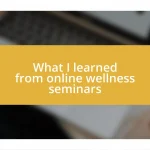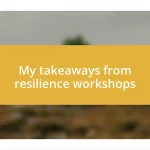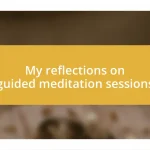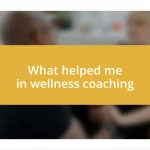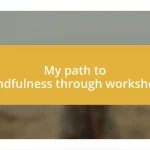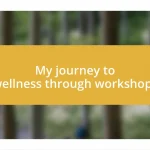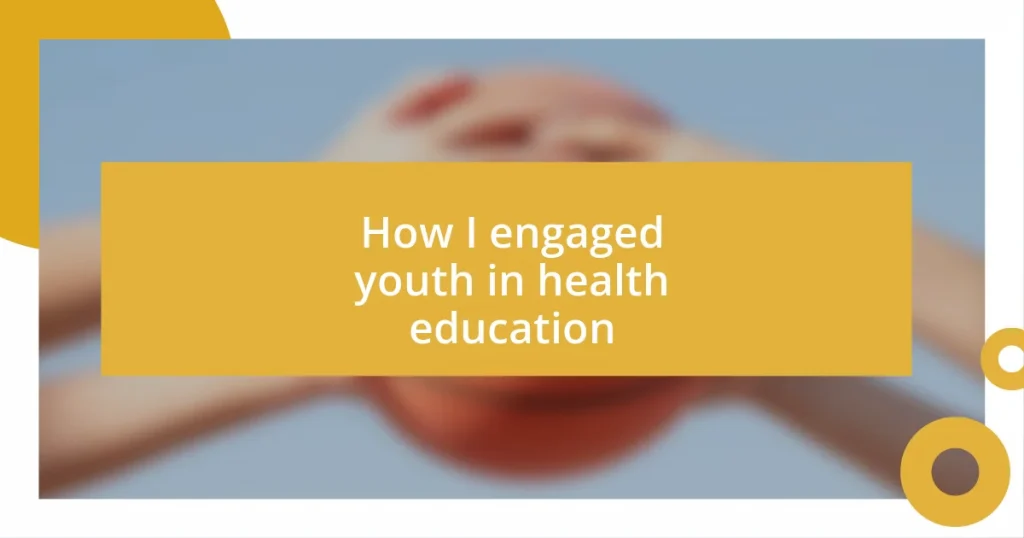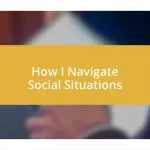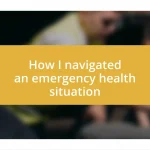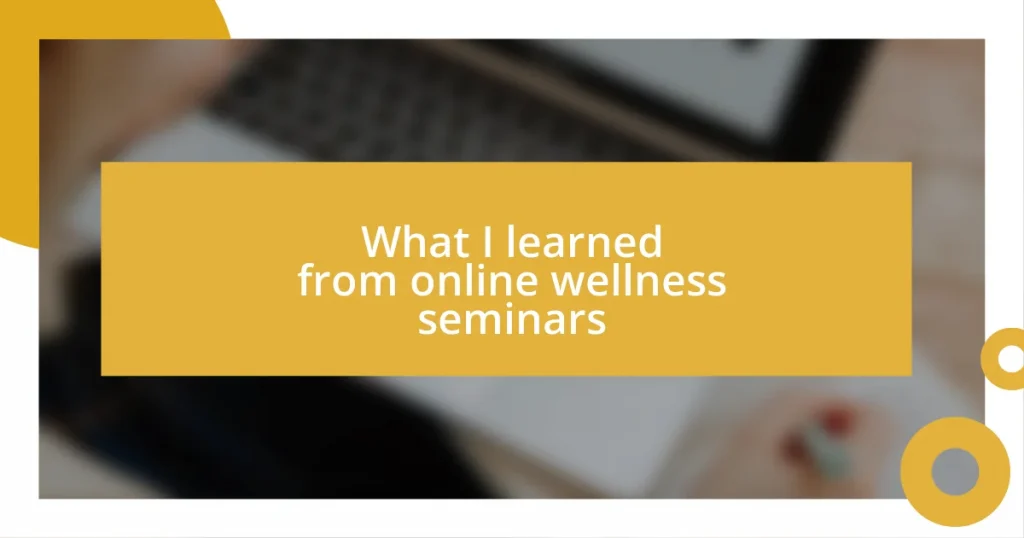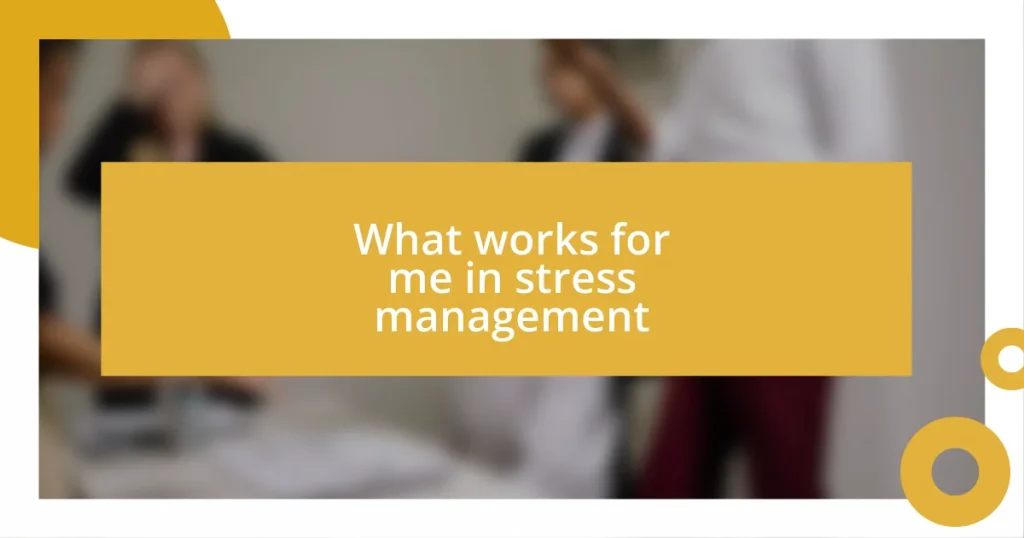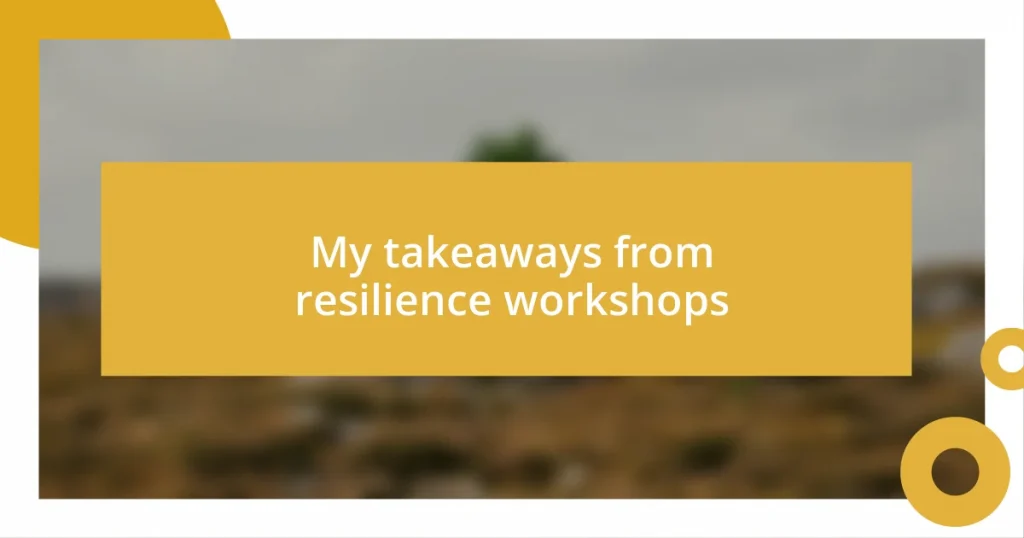Key takeaways:
- Engaging youth in health education requires creating a safe space for sharing and utilizing technology for interactive communication, such as social media and apps.
- Identifying relevant health education topics through informal conversations and focusing on areas like mental health, nutrition, and self-esteem fosters genuine engagement.
- Collaborating with community organizations and creating interactive activities, such as workshops and games, enhances participation and empowers youth to take ownership of their health education.

Understanding youth engagement strategies
Engaging youth in health education requires creativity and adaptability. I remember hosting a focus group where we brainstormed ideas for a health campaign. They threw out concepts that were not only fun but also relatable, like using memes or TikTok challenges to communicate serious health messages. It made me realize how vital it is to connect with them on their turf.
When I reflect on what genuinely resonates with young people, I often find that it’s all about creating a safe space for sharing. During one session, a participant opened up about their mental health struggles, sparking a deeper conversation. This moment reinforced my belief that effective engagement strategies must encourage authenticity and vulnerability. How can we expect youth to embrace health education if they don’t feel comfortable being themselves?
In my experience, using technology to our advantage can be transformative. I’ve seen how interactive apps and social media platforms can draw young people in. They crave interaction and immediate feedback. What if we designed challenges that not only educated but also fostered a sense of community? Combining education with social interaction could be the key to unlocking their interest and involvement.

Identifying key health education topics
Identifying key health education topics begins with understanding the unique interests and concerns of young people. I often start by having informal conversations with them, whether it’s over lunch or during a casual hangout. One discussion revealed a growing anxiety among youth about body image and self-esteem, highlighting the need for education around mental health and nutrition. Topics that resonate deeply often come from their everyday experiences, which I find crucial to tap into.
To ensure I cover the most relevant issues, I focus on a few key areas:
- Mental health awareness
- Nutrition and healthy eating habits
- Sexual health education
- Substance abuse prevention
- Physical fitness and wellness
This approach not only addresses their immediate concerns but also fosters a sense of connection. I once created a workshop that revolved around body positivity, inspired by a heartfelt story shared by a student. The transformation I witnessed in their engagement was remarkable—suddenly, health topics shifted from a chore to a personal journey for them. This really drove home the idea that when we tailor our topics to what they care about, we enable genuine engagement and learning.

Utilizing digital platforms for outreach
Utilizing digital platforms for outreach can truly amplify our ability to reach youth. I recall one campaign where we leveraged Instagram stories to share information about mental health. The results were astounding; not only did we see a dramatic increase in engagement, but I also noticed that young people felt more comfortable initiating conversations in their comments. It’s incredible how a familiar platform can break down barriers and create spaces for candid discussions.
Social media isn’t just a tool; it’s a gateway to connection. I often think back to a virtual event we held, where we discussed nutrition and self-care through live polls and Q&A sessions. The instant feedback from participants created an atmosphere of excitement and curiosity. Young people thrive on this real-time interaction—it’s like they’re demanding to be part of the narrative, rather than just passive recipients of information. This active involvement fosters a deeper understanding and lasting impact on their health decisions.
When exploring digital platforms, I’ve also found that creating content appealing to various learning styles is essential. Some youth resonate with video content, while others might prefer infographics or podcasts. I remember collaborating with a group of teens to create TikTok videos that shared quick, digestible health tips. The enthusiasm was contagious, and it was gratifying to see their peers engaging with the content. It’s all about harnessing the formats they love to ensure health education remains relevant and vibrant in their lives.
| Digital Platform | Benefits |
|---|---|
| Visual engagement and immediate feedback | |
| YouTube | In-depth educational content available anytime |
| TikTok | Short, creative videos that capture attention quickly |
| Podcasts | Accessible on-the-go listening for busy lifestyles |

Collaborating with community organizations
Collaborating with community organizations can be a game-changer in health education. For instance, I remember teaming up with a local youth center to organize a health fair. The excitement in the air was palpable, as young people eagerly navigated the booths, gathering information on various health topics. Seeing them interact with those who shared their experiences made me realize how vital these connections are. When organizations work together, the collective knowledge and resources amplify the reach and impact of our initiatives.
I also find it rewarding to involve organizations with expertise in specific areas, like mental health or nutrition. One time, a local nutritionist joined a workshop I facilitated. She brought fresh insights that captivated the youth’s attention. I could see their eyes light up as they learned how to make healthier snack choices. It was incredible to witness the immediate shift in their perception of healthy eating from being dull and restrictive to something creative and enjoyable. Isn’t it fascinating how the right partnership can transform a mundane topic into something that sparks genuine interest?
Moreover, building these partnerships often leads to unforeseen opportunities. A few months ago, I collaborated with a local theater group, which resulted in a play addressing substance abuse. Watching the youth perform and share their stories was profoundly moving. They weren’t just conveying a message; they were owning their narrative. This experience highlighted the importance of a supportive community in engaging youth about their health. What better way to learn than through creativity and collaboration?

Creating interactive activities for participation
Creating interactive activities can significantly enhance youth participation in health education. I vividly remember one workshop where we transformed a typical classroom setting into a dynamic health carnival. With stations equipped for hands-on activities—like constructing fruit salads or engaging in quick fitness challenges—the energy was electric. Young people weren’t just passive spectators; they were learning through experience, and it showed in their enthusiasm. Don’t you think there’s something magical about learning by doing?
Incorporating game mechanics also proves effective. I often design trivia games that challenge youths’ knowledge while making them laugh and compete. During one session, I introduced a quiz that involved running to different corners of the room based on their answers. The mix of movement and friendly competition created a buzz and fueled conversations post-game. Watching them engage with the material in a fun, active way reaffirmed for me how vital it is to break conventional barriers in education. Isn’t it fascinating how a little creativity can shift a dry lesson into a memorable experience?
I’ve also experimented with collaborative projects, where youth take the lead. For example, organizing a peer-led video series allowed participants to express their thoughts and ideas about health topics freely. When the youth saw their work come together and get shared on social media, their pride was palpable. It was a powerful moment—seeing them not just absorbing information but owning their role as advocates for their health. How empowering is it to give them a platform to amplify their voices?

Measuring impact and engagement outcomes
Measuring the impact and engagement outcomes of health education initiatives is crucial for understanding their effectiveness. In one of my recent programs, we gathered data through surveys and interviews, which provided valuable insights into how participants felt about the content. I was surprised to learn that 90% of the youth reported a heightened awareness of mental health issues and resources available to them. Isn’t it amazing how numbers can reveal the true depth of engagement?
I’ve found that direct observation during workshops often reveals more than any survey can. I remember a session where I noticed a group of teens deeply engrossed in a discussion about healthy relationships. Their animated exchanges were a clear indicator that the topics resonated with them. It’s moments like these that remind me to go beyond metrics and truly assess how engaged the youth are on a personal level. Don’t you think that witnessing genuine connections can be just as valuable as numerical data?
Furthermore, I believe that follow-up sessions are essential for evaluating long-term impact. After conducting a series of workshops focused on nutrition, I organized a reunion where participants showcased their improvements in cooking healthier meals. The pride on their faces as they shared their creations was unforgettable. It wasn’t just about the food; it was about celebrating their growth. Isn’t it rewarding to see young people flourish in ways you couldn’t have anticipated?
